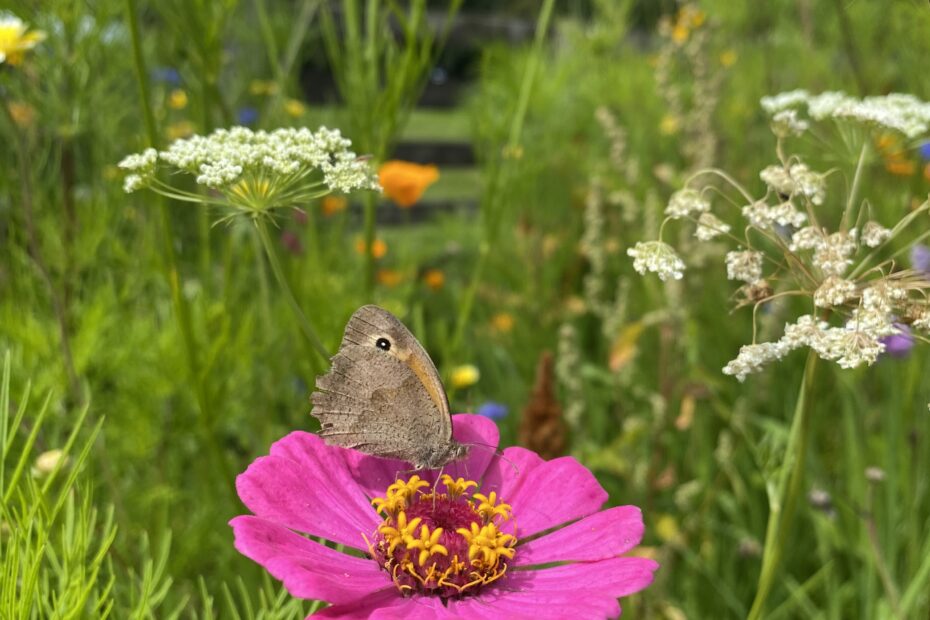We made a wildflower meadow! We didn’t mean to. It was the side effect of a longer term garden management plan but it has turned out to be The Very Best Garden Project of 2023. It is November now and the meadow is no more, so it is the perfect time to reflect on a glorious success… and plan the next moves for the meadow.
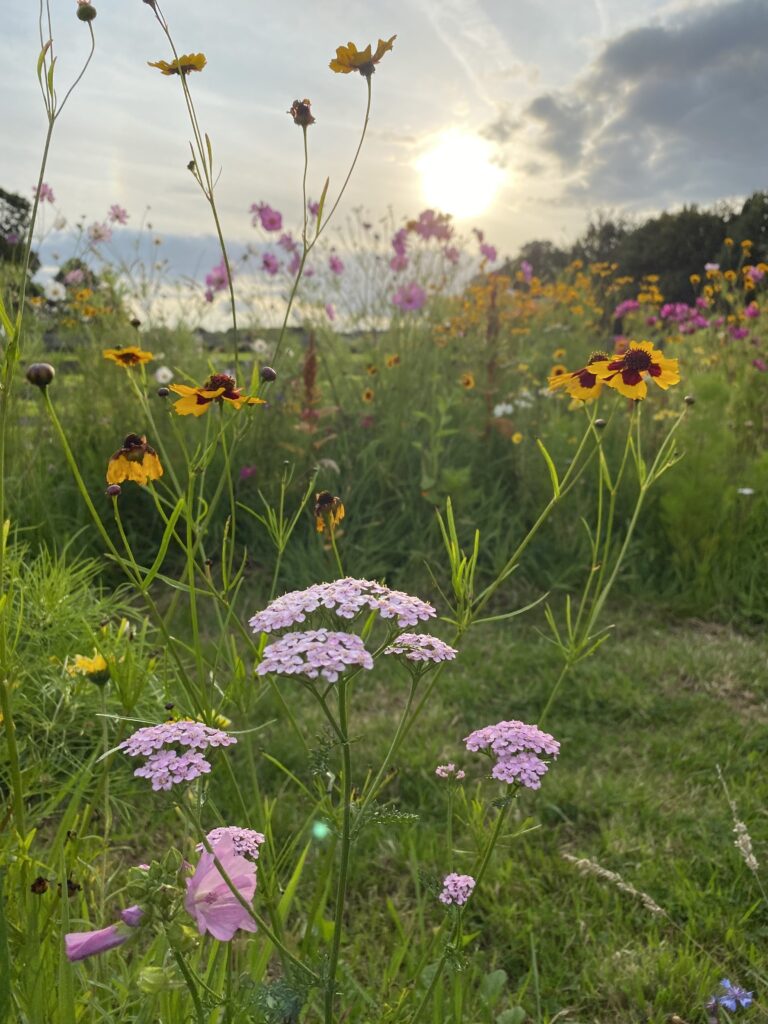
Rose Cottage is a tiny red brick 19th century cottage, with a modern 2-storey kitchen / bedroom extension to the rear, set at the heart of a small rural Wiltshire village. The current occupier, Jerome, bought the property from a man who had lived there for over ninety years. He was born a handful of houses away and died at the grand old age of 102 in 2021. Mr Doug Wiltshire was proud of his colourful and traditional cottage garden and he shared his horticultural expertise with the village, keeping verges and green public areas neat and attractive for decades. Doug’s gardening prowess meant that the village won awards over the years, including Wiltshire Best-Kept Village. This meant that there was some pressure to keep up appearances at Rose Cottage in the new post-Doug era.
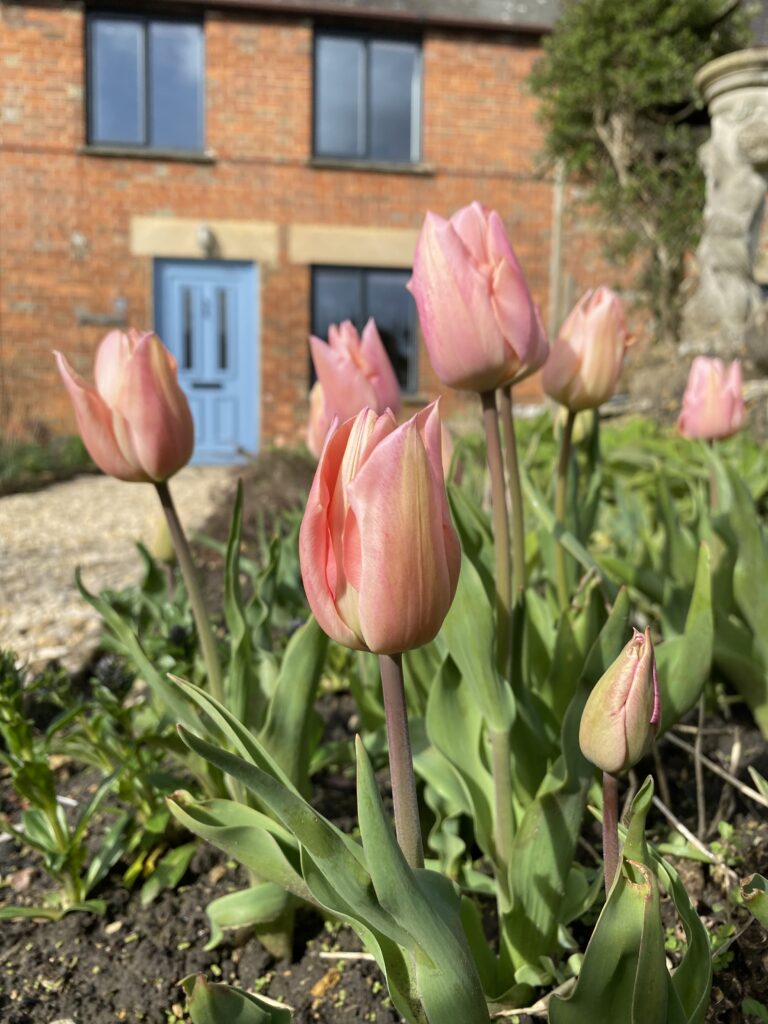
The front garden has a formal layout with a straight path flanked by borders leading from the roadside to the front door. A square patch of lawn contains one apple tree; a cooker, onto which Doug successfully grafted an eating apple, Malus ‘Annie Elizabeth’ in honour of his niece, Ann Elizabeth. This smart front garden, that Doug would fill with bedding plants in the growing season, became a quagmire during the building of the extension and I am sure that neighbours wondered if it was to be consigned to history.
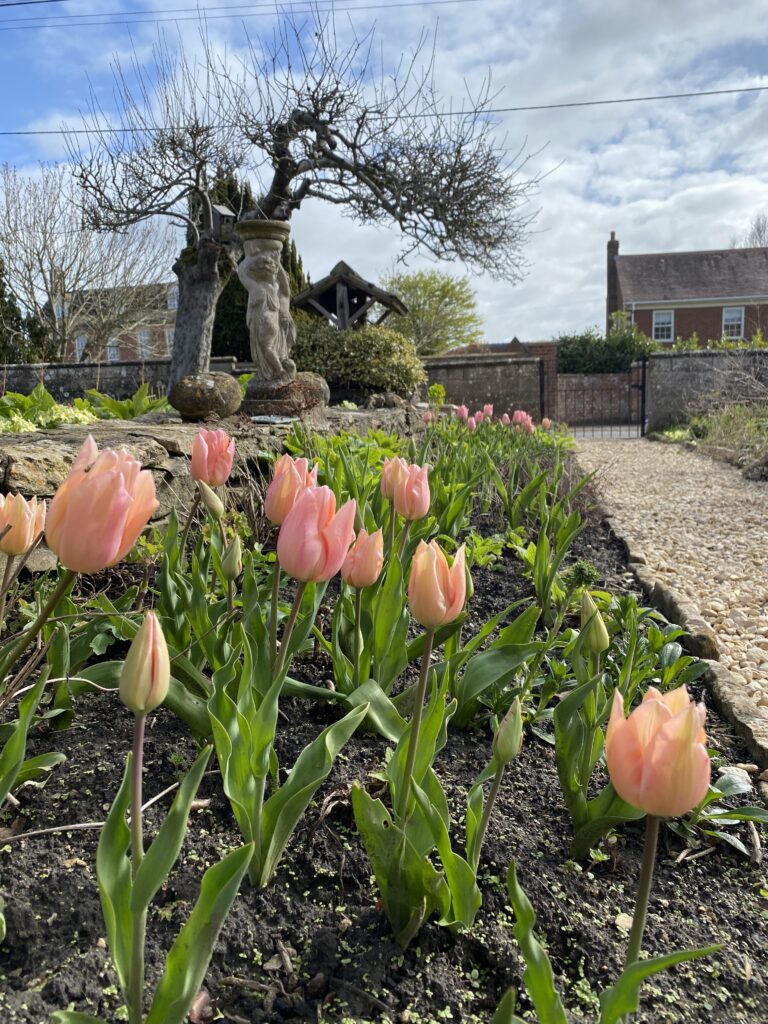
Whilst it is true that the new occupier doesn’t have the same amount of time to devote to his garden as Doug did, I hope the neighbours can now see that a considerable effort is being made to reinstate year round colour and biodiversity to the frontage. In fact, a ‘modern topiary garden’ has been proposed and is in the planning stages. Meanwhile, the bedding plants have been replaced with lower maintenance but equally vibrant perennial plants, and there are imminent steps to introduce more roses to Rose Cottage… considering the name it is only fitting, after all. However, it is at the back of the house that true horticultural magic is happening.
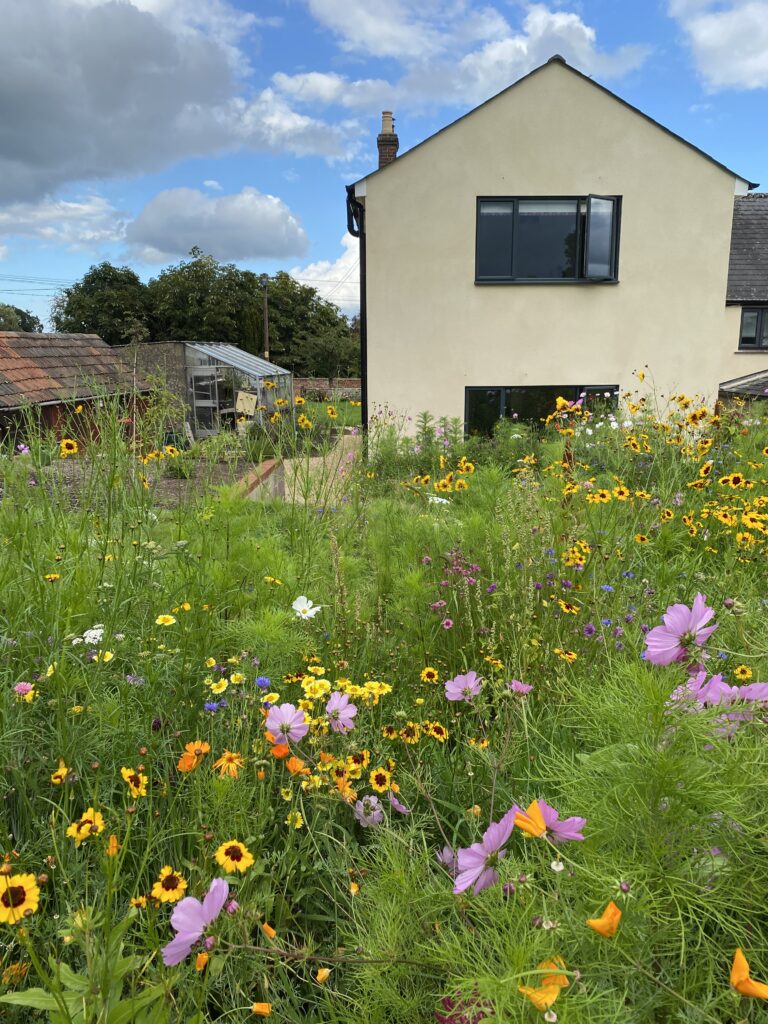
The long-term plan for the rear garden is for it to become a mixed fruit and ornamental tree orchard with spring bulb meadow, mown grass paths and wilder areas with, hopefully, perennial meadow grasses and flowers for maximum cover for wildlife and floral rewards for pollinators. Building an extension that eats into an existing raised lawn leaves mountains of topsoil and subsoil and, rather than have the builders remove the mountains, we decided to have a closer look and the topsoil was a glorious sandy clay loam, which was absolutely crying out to be used. The subsoil contains quite a lot of yellow clay, which is less useful in horticultural terms but excellent for re-contouring parts of the garden where levels are slightly off.
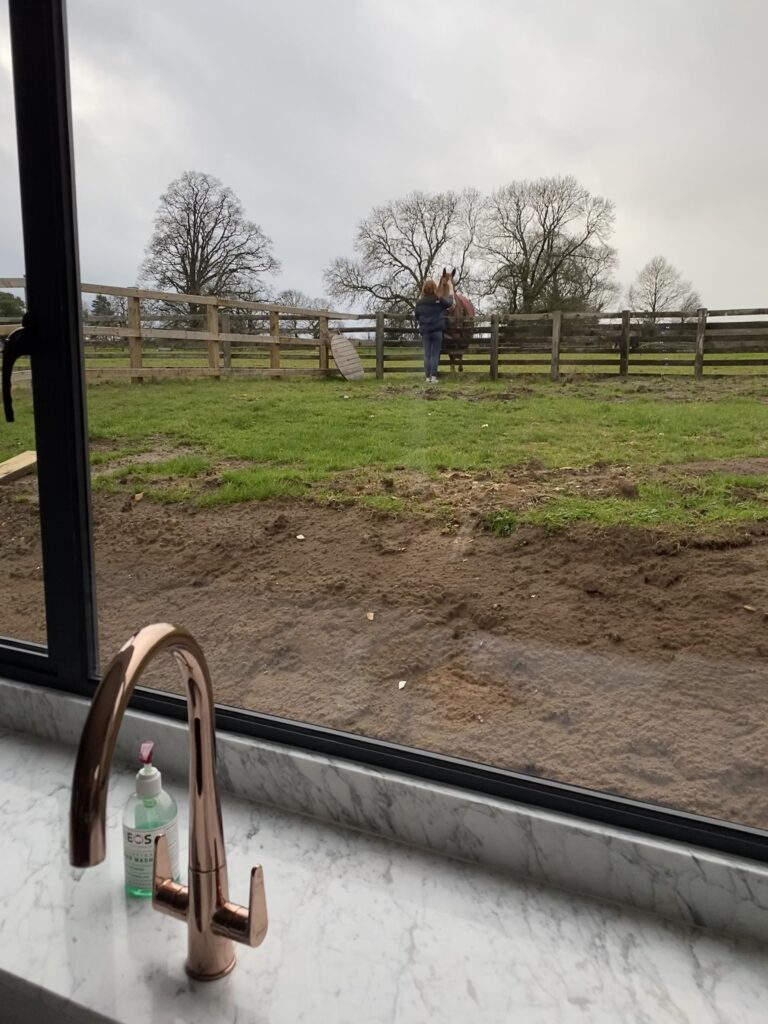
Drainage will always be an issue when there is yellow clay around so keeping a healthy balance of subsoil to topsoil is crucial. I am pleased that such attention to detail was shown at this stage because 2023 has proved to be more than a little soggy. Although one or two puddles have appeared, the reinstated rear garden surface has held up enormously well. This is because, despite the clay subsoil, any natural surface is better than an impenetrably solid one. Problems with flooding are more and more frequent as areas of previously green swathes of land are ‘developed’ into areas of hard-standing.
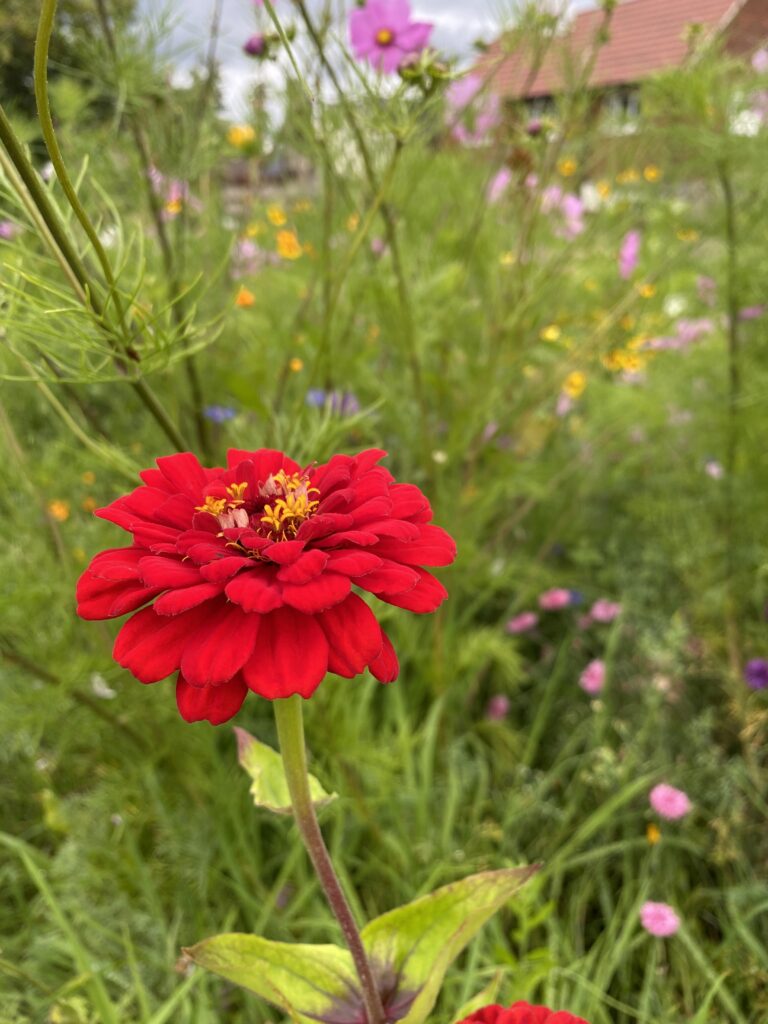
The young bare-root trees went in the ground last winter and, almost one year on, they are all looking great. Two apples, one greengage, several crab apples, a Hornbeam ‘Rockhampton Red’, Parrotia persica ‘Vanessa’ and Sorbus pseudohupehensis ‘Pink Pagoda’ make up a motley but characterful crew of trees that will provide year round interest. Spring blossom, summer fruit, autumn colour, winter structure – these trees bring all of these traits plus their individual personalities. For the present, however, they are small and the back garden needed something more than just a sprinkling of grass seed to keep up appearances throughout the growing season.
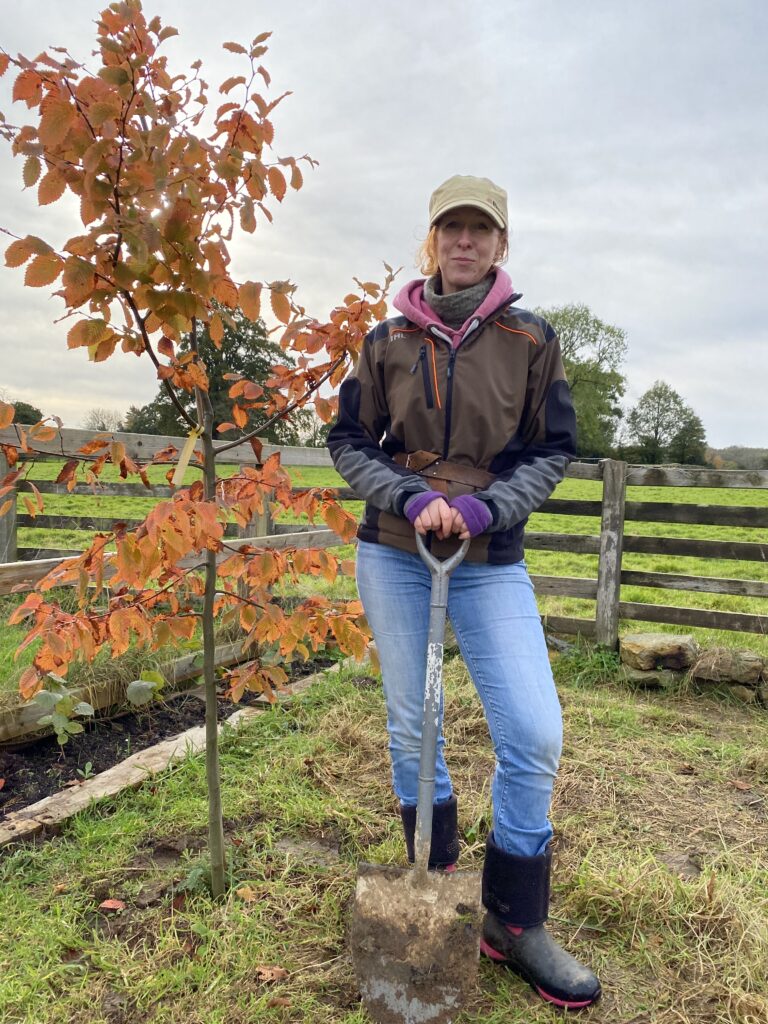
When I first broached the subject of under sowing the young orchard with wildflower seed, Jerome was a little unsure about what this might entail and, to be completely honest, I was too. Luckily, he has an unswerving trust in my horticultural experience (I do hope that never changes!) and allowed me to go ahead and consult my wildflower supplier of choice, Meadowmania, for advice. We already had the right conditions. Free-draining soil, an absence of grass due to the extension and an almost blank canvas. The ultimate aim was that we clothed the rear garden in colour and movement whilst attracting a whole host of flying, buzzing, hopping and scampering wildlife. Not to mention the fact that leaving soil bare and exposed to the elements is a recipe for small scale disaster. Bare soil is left prone to erosion from wind and water and the sun’s rays will also damage a lot of valuable soil life. Precious nutrients and soil structure will degrade unless cover from plants or a mulch is provided.
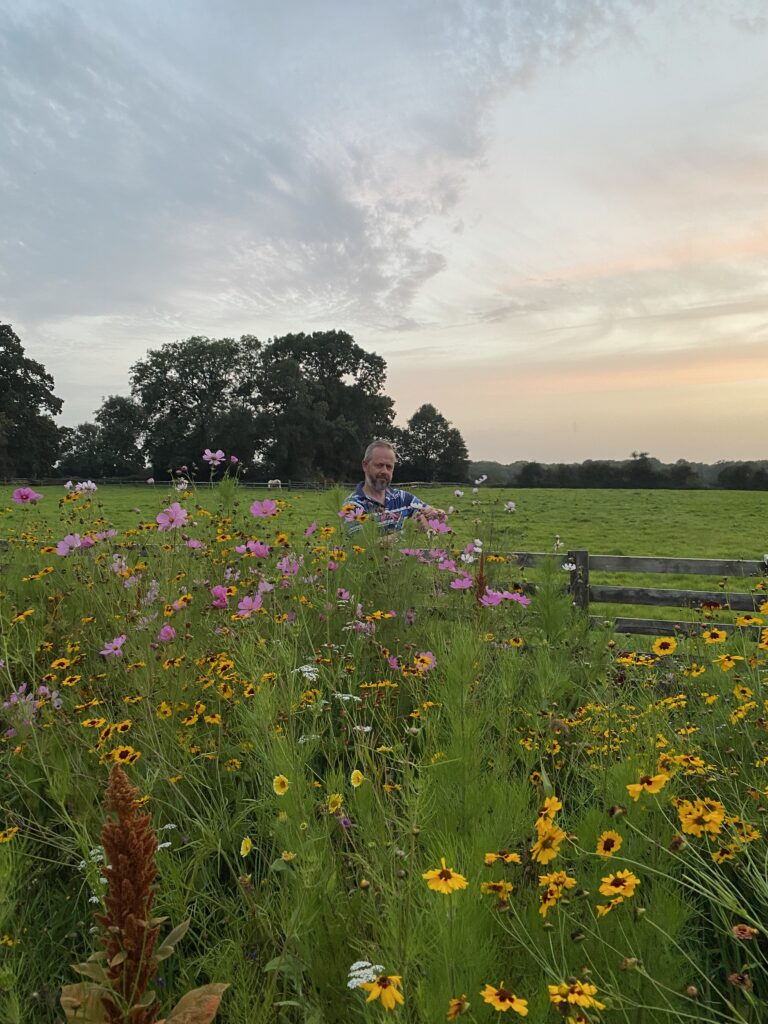
Some research was done into the type of seed mix that I thought would best suit the conditions (currently pretty exposed to the prevailing winds, although I have high hopes that the Carpinus ‘Rockhampton Red’ and a row of purple hazel plants grown from seed will provide quite a lot more shelter in the future), whilst also giving a long season of fabulous colour, different textures and rewards for pollinators. The Meadowmania Hardy Annual 100% Wildflower Seed Mix was chosen. Little did myself and Jerome know that this would be the beginning of what was to be The Very Best Garden Project of 2023. I very much hope that Doug would approve.






